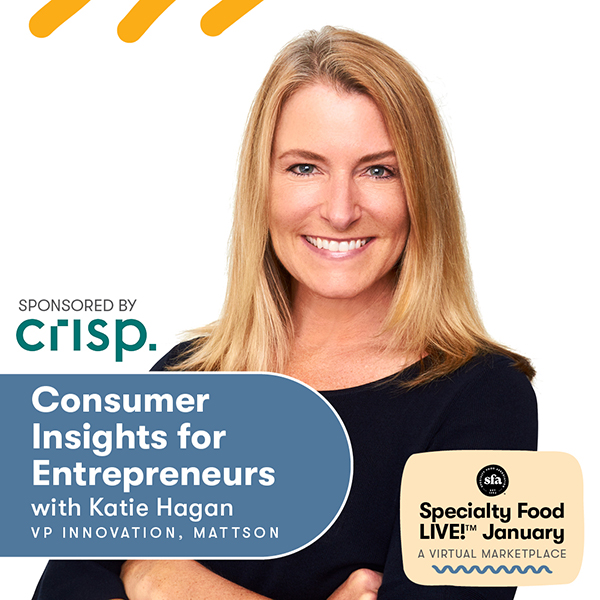“You can use consumer insights and data to make stronger decisions and feel confident your product will succeed in the marketplace,” said Katie Hagan, vice president of innovation at Mattson, during a Specialty Food Live! session, Wednesday. According to Hagan, consumer insights are essential to food makers because they allow them to better develop, market, and sell products, and identify opportunities for new ones.
Following are the five steps Hagan identified for acting on consumer insights.
1. Identify
First, think about what kind of data you’re looking to gather and what you want to use it for. Consider key stakeholders and what information they might need from the consumer data. Hagan suggests also thinking about who you want to talk to; do you want to reach current customers, potential customers, or both?
2. Design
This step comes after you decide whether you'd like to do qualitative or quantitative research, said Hagan. Qualitative research involves observing and analyzing a small group of people to understand their opinions and motivations. Qualitative research methods include focus groups, in-home observations, and one-on-one interviews. This type of research can be time consuming and costly, said Hagan who suggests recruiting friends, family, and colleagues or providing compensation in the form of free food, drinks, or product to cut down costs.
Quantitative research involves a larger sample size (a minimum of 100 people; 200-300 is typical) and is a faster, less expensive way to get data. The data is numerical and, if statistically significant, can allow companies to apply the learnings more generally. Types of quantitative research include concept tests, a way to test naming, variety, and branding of products; central location tests, a way to get information on product sensory elements; and attitude and usage studies, which help makers gain a better understanding of a broad market, category, or opportunity.
To cut down costs related to quantitative research, Hagan suggests leveraging email subscription or customer lists, incentivizing with product samples or discounts, and using free or inexpensive online survey sites.
3. Execute
Once you identify your audience and the type of research you’re doing, set up your tool to capture your data, said Hagan. Pre-pandemic, much of this research was taking place in-person, but video or phone calls can be a safer alterntaive. Make sure your tool includes essential data like names, emails, mailing addresses, etc. Alert your audience via email or social media, and offer some form of compensation to ensure completion.
4. Analyze
Review your results. Hagan stressed that it’s important to be open to feedback, whether it is positive or negative. Track your learnings to use as a reference going forward.
5. Act.
Build on what you know is working and optimize what could be better. Incorporate customer insights into your regular process and use them to develop any new product, branding, and/or packaging, said Hagan.
Related: Why Optimizing Case Packs is More Important Than Ever; How to Achieve E-Commerce Success At Every Stage.

